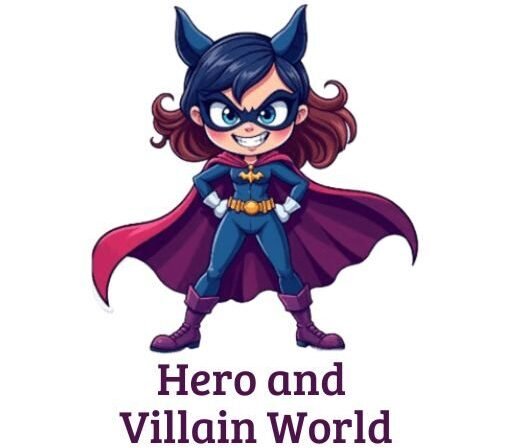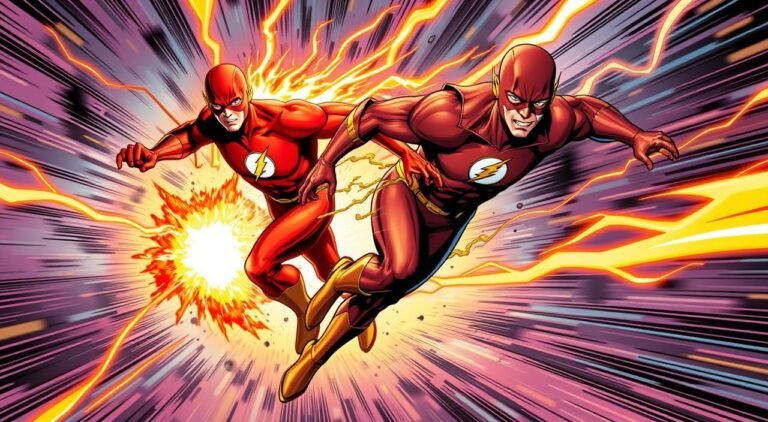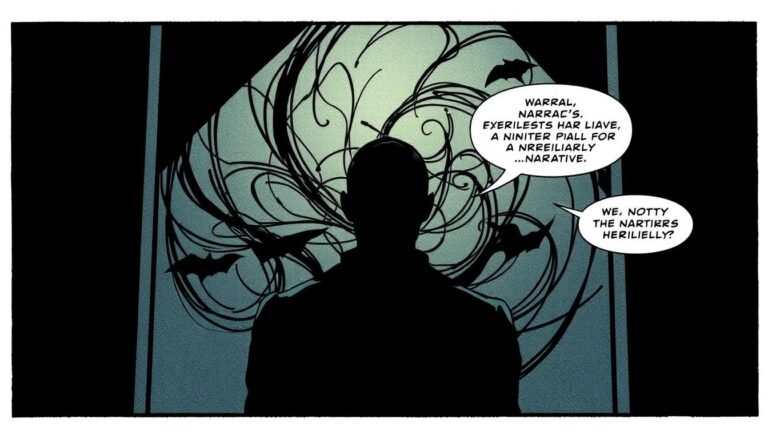How Batman Transformed Comics
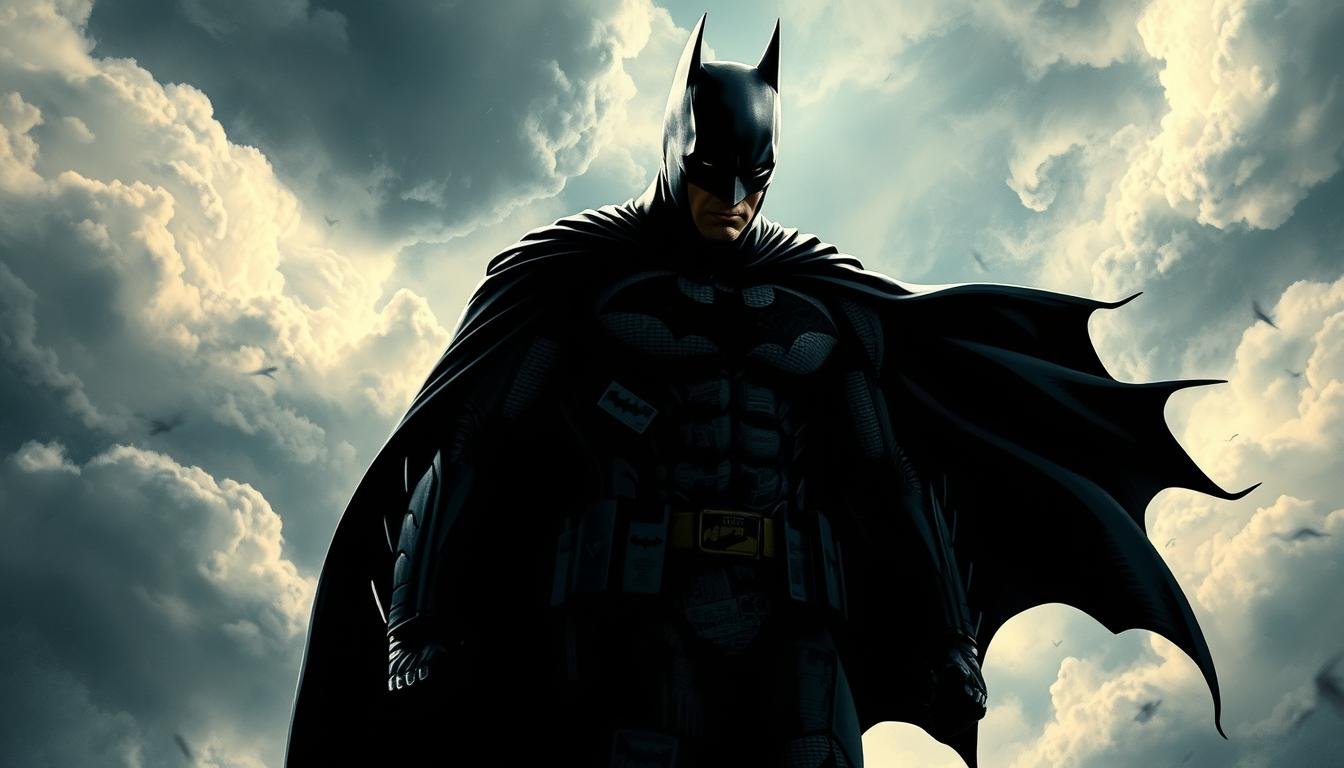
When I first picked up a comic book as a kid, I was instantly drawn to the mysterious figure of Bruce Wayne. His origin story, filled with tragedy and resilience, left a lasting impression on me.
Over the years, I’ve watched this character evolve from a simple crime-fighter to the complex Dark Knight we know today.
Created in 1939 by Bob Kane and Bill Finger, the hero first appeared in Detective Comics #27. From that moment, his journey began, shaping the world of superheroes forever.
This article will explore his transformation, key milestones, and the impact of his story on the comic book industry.
We’ll dive into his early days, the introduction of sidekicks like Dick Grayson, and the rise of iconic villains. We’ll also touch on the Kingdom Come storyline, highlighting how his narrative has grown darker and more intricate over time. Join me as we uncover the legacy of this legendary man and his place in comic history.
A Look at Batman’s Origins and Early Evolution
In 1939, a new hero emerged, forever changing the landscape of comic books. This character, created by Bob Kane and Bill Finger, would become a cultural icon.
His first appearance in Detective Comics #27 marked the beginning of a legacy that continues to inspire fans worldwide.
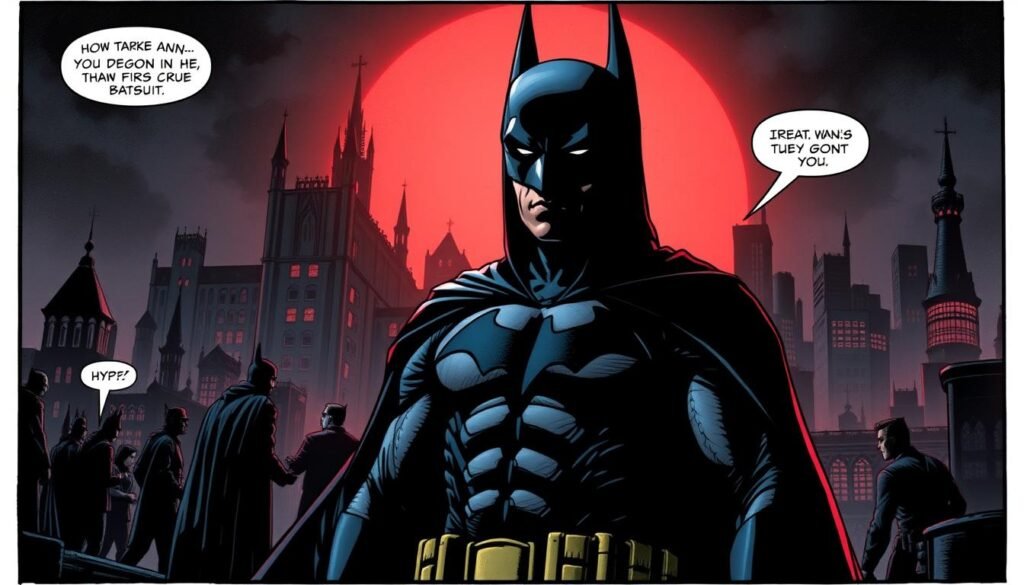
The origin of this hero is steeped in tragedy. Bruce Wayne, a young boy, witnesses the murder of his parents, an event that shapes his destiny.
This dark backstory set the tone for a character who would operate in the shadows, fighting crime with unmatched determination.
Early influences played a significant role in shaping this hero. Characters like Zorro, the Phantom, and the Shadow inspired his creation. These influences are evident in his dual identity, detective skills, and use of fear as a weapon.
Here’s a quick look at some key milestones from his early days:
| Year | Event | Significance |
|---|---|---|
| 1939 | First appearance in Detective Comics #27 | Introduction of the character |
| 1939 | Utility belt debut in Detective Comics #29 | Added to his crime-fighting arsenal |
| 1940 | Introduction of Robin in Detective Comics #38 | First sidekick added to the series |
The early artistic styles also set the stage for future evolution. The character’s design, from his cowl to his cape, became iconic. Over the years, artists like Jerry Robinson and Neal Adams would refine his look, adding depth to his mythos.
This early evolution was crucial in establishing the hero as a cultural icon. His willingness to use lethal measures in the beginning, his evolving gadgetry, and the introduction of his rogues’ gallery all contributed to his enduring appeal. For more on his journey from comic books to blockbusters, check out this detailed exploration.
How Batman Transformed Comics
The evolution of the Dark Knight is a testament to the power of storytelling and design. From his early days in Detective Comics to his modern interpretations, this character has continually redefined what it means to be a hero.
Changing Designs and Storytelling Techniques
In the 1940s, the origin of Bruce Wayne’s alter ego was simple yet impactful. His early design featured purple gloves and a basic utility belt.
Over the years, artists like Jerry Robinson and Neal Adams transformed his look into a gothic masterpiece.
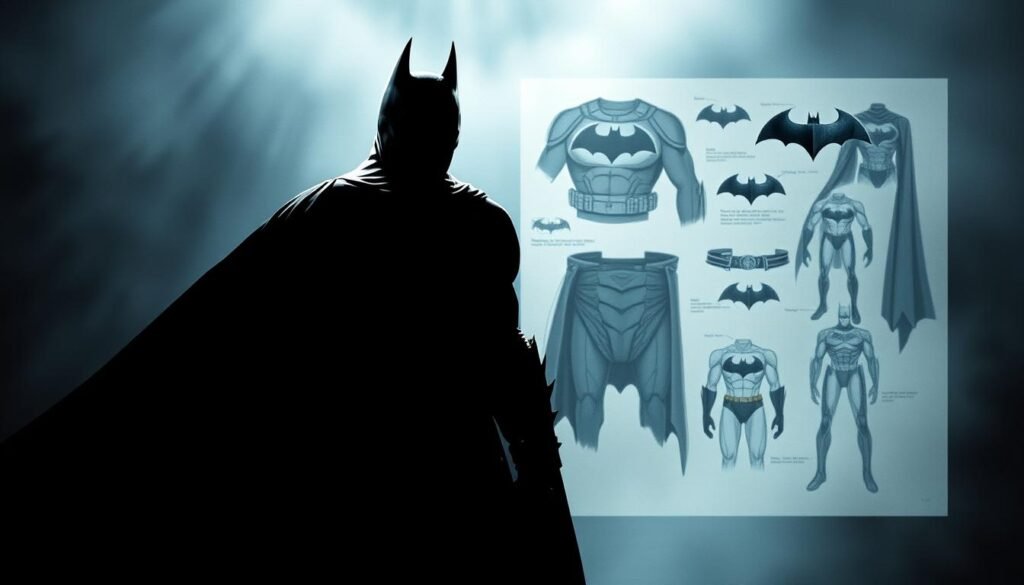
Narrative techniques also evolved. The introduction of Robin in 1940 added a new dynamic to the series. This shift allowed for more complex stories, blending action with emotional depth.
From the Golden Age to the Silver Age
The transition from the Golden Age to the Silver Age marked a turning point. The character became darker, reflecting societal changes. Stories like A Death in the Family showcased his vulnerability, making him more relatable.
Artistic reimaginings during this decade also played a crucial role. The villain gallery expanded, with iconic foes like the Joker gaining depth. These changes solidified his place in comic history.
For more on how storytelling evolved, check out this detailed exploration of Batman’s influence on animation.
The Evolution of Batman on Page and Screen
Over the decades, the journey of this iconic figure has spanned both pages and screens. From his origin in Detective Comics #27 to his blockbuster adaptations, the character has continually evolved, captivating audiences worldwide.
Comic Book Milestones and Critical Innovations
The story of this hero began in 1939, created by Bob Kane and Bill Finger. His first appearance introduced a gritty, crime-fighting persona that set him apart.
Over the years, landmark issues like the introduction of the Batcave in 1943 and Robin in 1940 redefined the comic landscape.
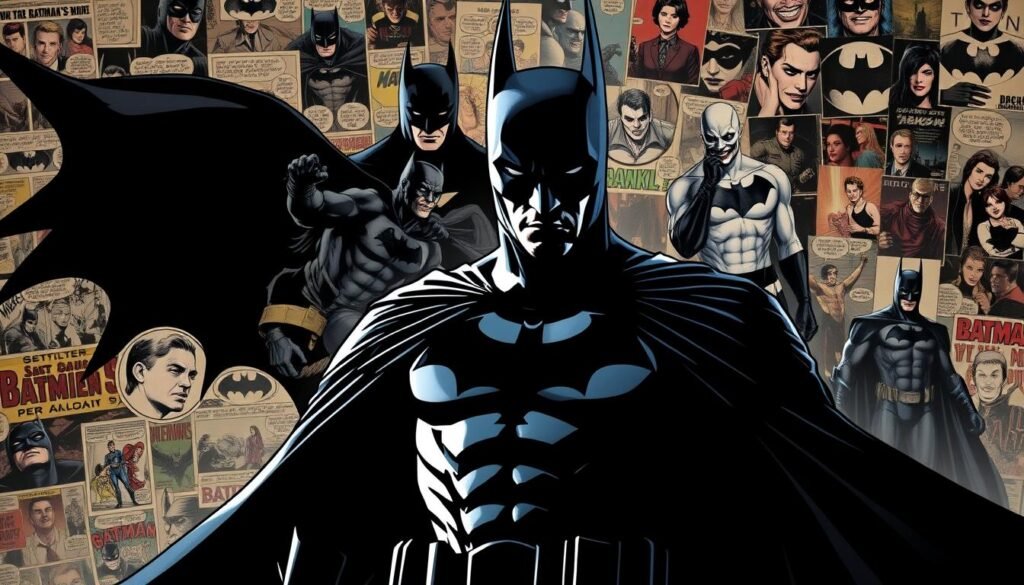
Artistic innovations also played a key role. The logo, for instance, underwent over 30 transformations, reflecting the character’s growth. From its simple beginnings to the gothic designs of the 1940s, each version added depth to his mythos.
Adaptations Across Movies, TV, and Other Media
The transition from print to screen began in 1943 with the first TV series. This adaptation brought the dark knight to life in a new way, introducing iconic elements like the Batcave to a broader audience.
Later, Tim Burton’s 1989 movie reimagined the character for a modern audience, blending gothic aesthetics with a darker tone. Christopher Nolan’s Batman Begins in 2005 took this further, offering a realistic portrayal that resonated with fans.
These adaptations not only kept the story relevant but also influenced the comics themselves. The mutual exchange between print and screen has solidified this hero’s place in popular culture.
Key Strengths, Weaknesses, and Critical Perspectives
Exploring the strengths and weaknesses of this iconic figure reveals a fascinating journey of evolution and critique.
From his origin in Detective Comics to modern adaptations, the character has sparked both admiration and debate. This section delves into the narrative strengths, creative risks, and fan reactions that have shaped his legacy.
Analyzing Narrative Strengths and Creative Risks
One of the most groundbreaking aspects of this story is its ability to evolve while staying true to its core. The early comic issues introduced a gritty, crime-fighting persona that resonated with readers.
Over time, writers and artists took bold risks, such as shifting from lethal methods to a strict “no-kill” policy in the 1940s.
Design changes also played a significant role. The transition from simple purple gloves to the gothic masterpiece we know today reflects the character’s growth. These creative risks not only kept the story fresh but also deepened its emotional impact.
Fan Critiques and Controversial Moments
Not all changes were met with praise. The campy tone of the 1960s TV series, for example, led to a decline in popularity. Similarly, the 1997 movie Batman and Robin faced harsh criticism for its overly cheesy portrayal.
On the other hand, Christopher Nolan’s The Dark Knight in 2008 was a turning point. Its darker, morally complex version of the character earned widespread acclaim. These moments highlight the delicate balance between innovation and tradition.
| Year | Event | Reception |
|---|---|---|
| 1940 | Introduction of “no-kill” policy | Positive, added depth to the character |
| 1966 | Campy TV series | Mixed, led to decline in popularity |
| 1997 | Batman and Robin release | Negative, criticized for tone |
| 2008 | The Dark Knight release | Positive, redefined the character |
These shifts in storytelling and design reveal the challenges of keeping a beloved character relevant. While some changes were celebrated, others sparked debates that continue to this day.
This ongoing dialogue is a testament to the enduring legacy of Bruce Wayne and his alter ego.
Conclusion
From his debut in 1939 to his modern-day adaptations, this hero has left an indelible mark on storytelling. Created by Bob Kane and Bill Finger, his first appearance in Detective Comics #27 introduced a gritty, crime-fighting persona that captivated readers.
Over time, his story evolved, blending emotional depth with groundbreaking design changes.
This character’s journey is a testament to the power of creativity. From his early days to blockbuster movie adaptations, he has continually redefined what it means to be a hero. His legacy is shaped by bold risks, iconic villains, and a commitment to justice.
For more insights into this legendary figure, explore the Hero and Villain World blog. His journey continues to inspire, proving that even in the darkest of times, heroes rise.
FAQ
Who created Batman and when did he first appear?
Bob Kane and Bill Finger created the character. He first appeared in Detective Comics #27 in 1939.
What inspired Batman’s origin story?
The idea came from a mix of influences, including pulp heroes, Zorro, and the concept of a dark, brooding vigilante.
How did Batman’s design change over the years?
His look evolved from a simple black-and-gray suit to more detailed designs, including the iconic bat symbol and cape.
What are some key milestones in Batman’s comic history?
Moments like the introduction of Robin, the Dark Knight era, and groundbreaking story arcs like *The Killing Joke* shaped his legacy.
How has Batman been adapted in movies and TV?
From the 1960s TV series to modern films like *The Dark Knight*, Batman has been reimagined across decades of media.
What makes Batman a unique superhero?
Unlike other heroes, he has no superpowers. His strength lies in intellect, detective skills, and a deeply human story.
Who are some of Batman’s most famous villains?
The Joker, Catwoman, and Two-Face are just a few of the iconic foes he’s faced over the years.
How has Batman influenced the comic book industry?
His darker tone and complex storytelling helped redefine what superhero narratives could be.
What are some fan critiques of Batman’s character?
Some fans debate his moral code, especially his refusal to kill, while others question his relationships with sidekicks like Robin.
